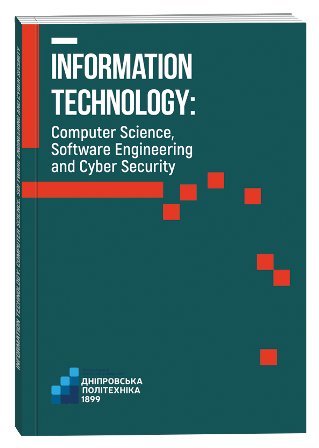IDENTIFICATION OF ENVIRONMENTAL DYNAMICS: CHALLENGES AND PROSPECTS OF DISTRIBUTED MODELING
DOI:
https://doi.org/10.32782/IT/2024-4-29Keywords:
ecology, distributed modeling, inverse problems, software package, experiment, environment.Abstract
The research is of significant importance as it aims to effectively address and solve coefficient problems in ecology using distributed modeling methods. The work aims to model atmospheric pollution processes that are not only adequate to those describing real processes but also have practical applications. This provides an opportunity to investigate and address issues such as a detailed analysis of the atmosphere state of a city or industrial area, short-term forecast of air quality in the region, assessment of long-term air purification programs, optimal emission management, transboundary transfer, etc. Methodology. Inverse ecological problems, which involve determining the cause of an observed effect, are considered and formulated through the analysis of cause-effect relationships. According to the adopted mathematical model, the ecological process’s causal characteristics are determined by the coefficients of the equation for the transfer of harmful impurities. In this interpretation, establishing cause-effect relationships is the goal of direct ecological problems, which involve determining the effect of a known cause. In the opposite case, if it is necessary to restore the causal characteristics based on information about the atmospheric pollution field, one of the formulations of inverse ecological problems is formulated, which belongs to the class of Hadamard-incorrect problems. The scientific novelty of the conducted research is a significant breakthrough in the field. It lies in developing a new approach to data processing at all stages of an ecological experiment using modern computing resources. Computational experiments were performed using distributed parallel computing systems. This is not only due to the fundamental limitations of the maximum speed of conventional sequential computers but also to the constant presence of problems for the solution of which existing computing resources are insufficient. Such problems include, in particular, climate modeling problems. Conclusions. These studies consider the formulation and methods of solving problems of identifying environmental dynamics, which essence is to estimate input parameters based on actual information about the modeled system known from the experiment. To analyze the assessment of the possibility of implementing mathematical models using computer technology, a set of programs was developed to calculate the transfer of harmful impurities. The solution of the test problem of identifying environmental dynamics is presented.
References
Петрик М. Р., Бойко І. В. Високопродуктивні обчислення та математичне моделювання в наукових дослідженнях. Тернопіль : Тернопільський національний технічний університет імені Івана Пулюя, 2020. 108 с.
Семеренко В. П. Технології паралельних обчислень : навчальний посібник. Вінниця : ВНТУ, 2018. 104 с.
Shvachych G. Implementation of system software of multiprocessor computing systems for solving applied tasks. Актуальні напрями розвитку технічного та виробничого потенціалу національної економіки : монографія / G. G. Shvachych, D. M. Moroz. Дніпро: 2021. C. 111–136.
Shvachych G., Shcherbyna P., Moroz D. Aggregation of computing channels based on the Nvidia Cuda platform for control modes of components of technological systems. Information Technology: Computer Science, Software Engineering and Cyber Security. 2022. № 2. P. 85–92.
Shvachych G., Moroz B., Martynenko A., Hulina I., Busygin V., Moroz D. Model of Speed Spheroidization of Metals and Alloys Based on Multiprocessor Computing Complexes. Machine Learning for Predictive Analysis. Networks and Systems. Springer. 2020. P. 33–41.
Shvachych G., Vozna N., Ivashchenko O., Bilyi O., Moroz D. Efficient algorithms for parallelizing tridiagonal systems of equations. System technologies. Dnipro. 2021. № 5 (136). P. 110–119.
I. Mamuzić G. G. Shvachych P. O. Ishchuk Challenges of Parallel Numerical Integration of Pollution Transport Equations. Book of abstracts of the 17th International Symposium of Croatian Metallurgical Society – SHNM ‘2004 Materials and metallurgy (published in Metalurgija 63 (2024) 3-4), P. 477–492.
Швачич Г. Г., Шмукин А. А. Особенности конструирования параллельных вычислительных алгоритмов для ПЭВМ в задачах тепло- и массообмена. Восточно-европейский журнал передовых технологий. 2004. № 3. С. 42–47.
Shvachych G., Vozna N., Ivashchenko O., Bilyi O., Moroz D. Method of lines in distributed problems of experimental data processing. International Academy Journal Web of Scholar. 2021. № 2(52). P. 1–7.
Lienhart H., Stoots C., Becker S. Flow and Turbulence Structures in the Wake of a Simplified Car Model (Ahmed Model). New Results in Numerical and Experimental Fluid Mechanics III. 2002. Vol. 12, p. 323–330.
Лаврик В. І. Моделювання і прогнозування стану довкілля : [навч. посіб]. / В. І. Лаврик. К. : ВД КМ Академія, 2010. 400 с.
Башков Є. О., Іващенко В. П., Швачич Г. Г. Високопродуктивна багатопроцесорна система на базі персонального обчислювального кластера. Проблеми моделювання та автоматизації проектування. 2011. Вип. 9 (179). С. 312–324.
Пат. 61944 Україна, МПК C21D 1/26, G06F 15/16 (2011.01). Модуль високоефективної багатопроцесорної системи підвищеної готовності / Іващенко В.П., Башков Є.О., Швачич Г.Г., Ткач М.О. ; патентовласники Національна металургійна академія України, Донецький національний технічний університет. – № u 2010 09341; заявл. 26.07.2010; опубл. 10.03.2011, Бюл. № 5.







